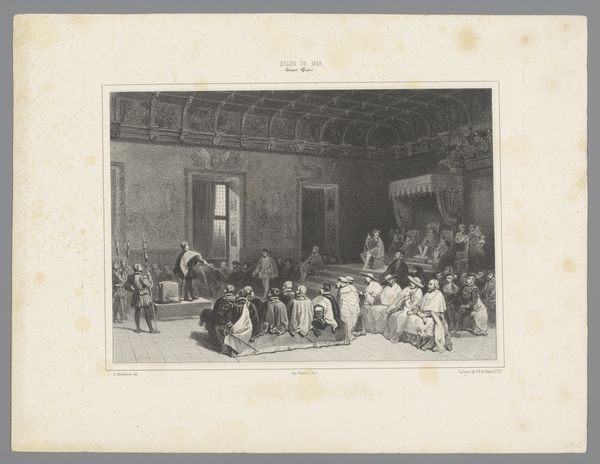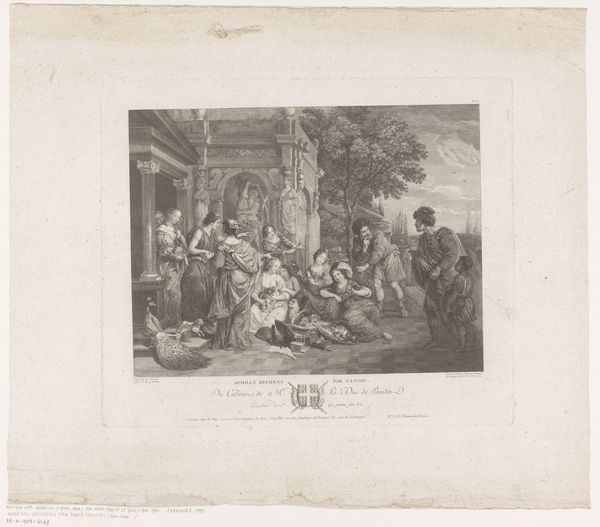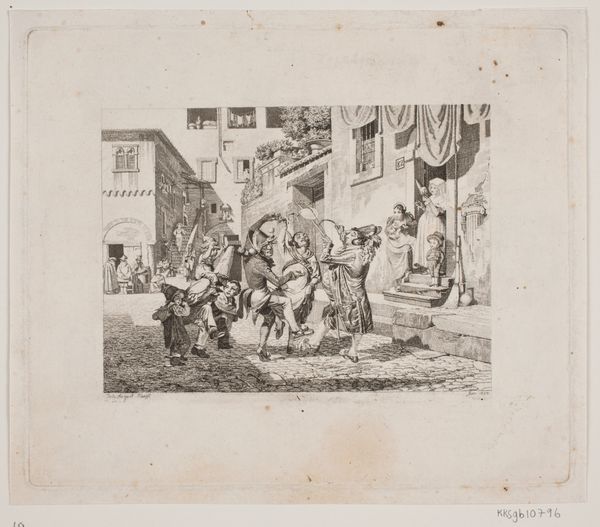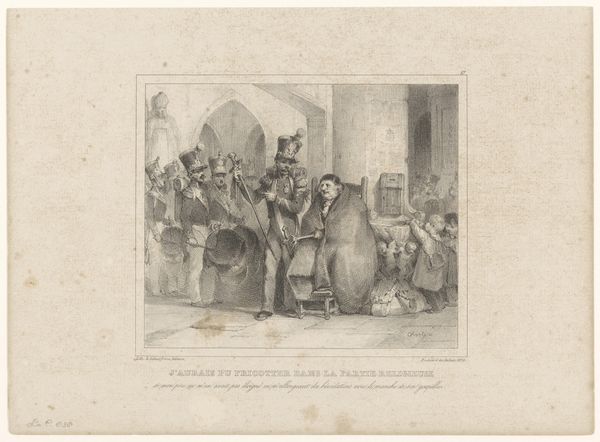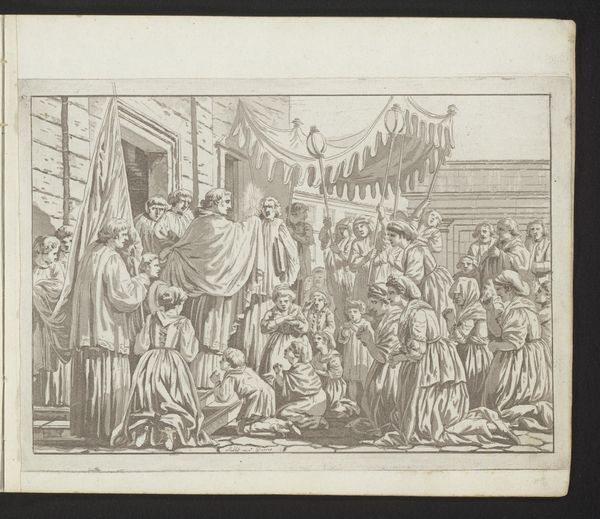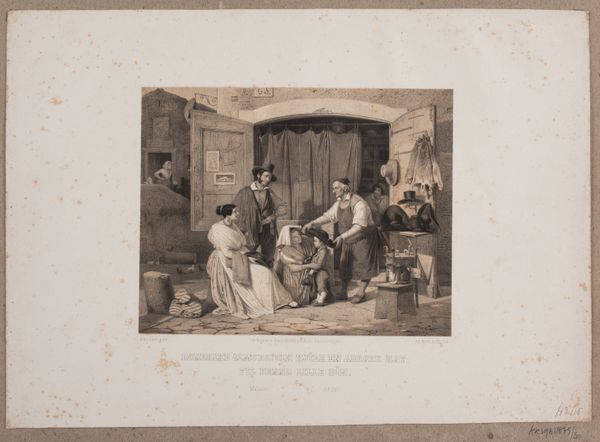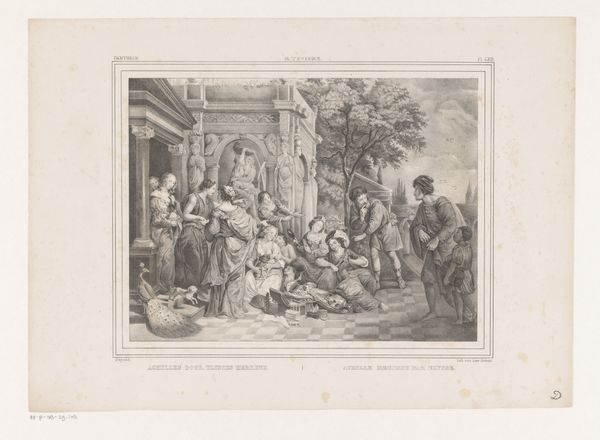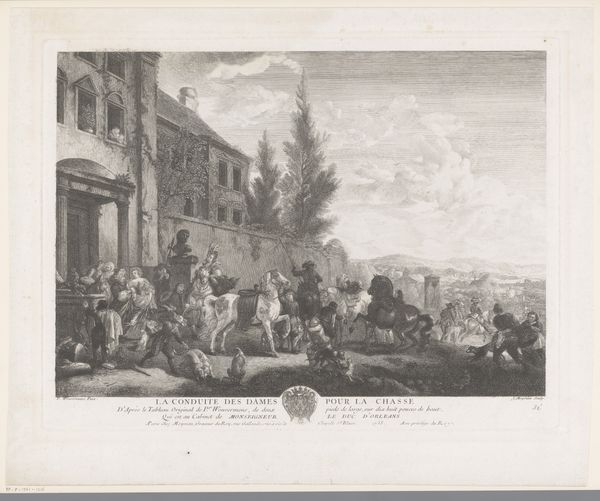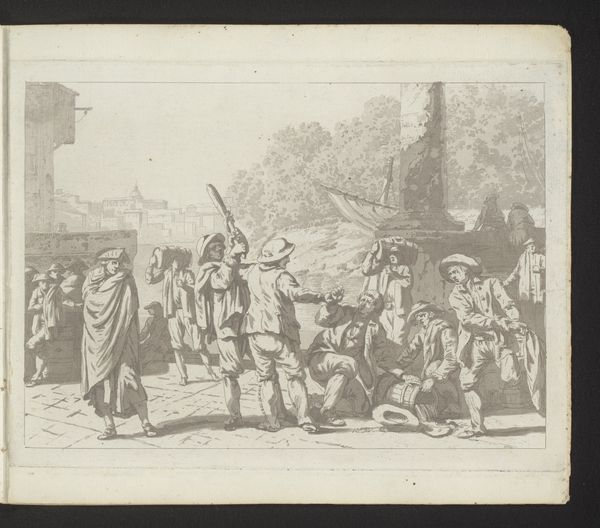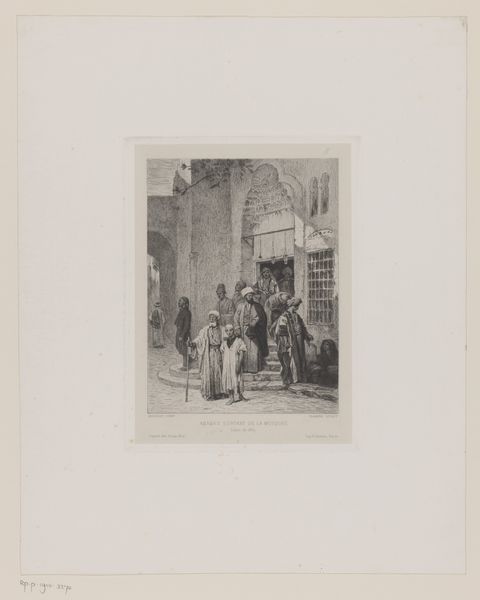
Episode 13: In Prato Saint Bernardino heals a boy attacked by a bull; Episode 14: In Bologna Saint Bernardino orders the burning of luxury books and paints the sign of Christ for a gambler; Episode 15: Saint Bernardino travels to Mantua by foot, from "The Life of Saint Bernardino of Siena" 1610 - 1639
0:00
0:00
drawing, print, engraving
#
drawing
#
baroque
# print
#
old engraving style
#
history-painting
#
engraving
Dimensions: Plate: 8 3/8 × 10 13/16 in. (21.3 × 27.4 cm) Sheet: 12 3/16 × 17 1/2 in. (30.9 × 44.5 cm)
Copyright: Public Domain
Editor: Here we have a print from the early 17th century, sometime between 1610 and 1639, by Bernardino Capitelli. It's part of a series called "The Life of Saint Bernardino of Siena" and depicts several episodes from the saint's life all in one engraving. I find the depiction of such dramatic scenes using such fine lines and a restricted monochrome palette very compelling. How do you approach a piece like this? Curator: Well, what strikes me first is how Capitelli, working within the visual language of the Baroque period, uses this print not just to illustrate hagiography but to actively participate in shaping St. Bernardino’s public image. Prints like this were key in disseminating ideas and solidifying religious figures' roles within the culture. Think about where something like this would be displayed, who would have access to it? Editor: Perhaps in monasteries, or affluent homes, allowing for repeated and widespread visibility. Curator: Precisely. And look at the specific episodes Capitelli chose to highlight. Healing a boy, confronting gamblers, even travelling on foot. These scenes all construct a particular narrative around St. Bernardino. What do these images communicate to a 17th-century viewer? Editor: A message of humility, compassion, and divine power perhaps, especially significant in the context of Counter-Reformation ideals. Almost as a promotional image for Sainthood. Curator: Exactly! It highlights the Church's values in the face of Protestant criticisms. Capitelli isn't simply documenting events; he's actively involved in shaping how people understood St. Bernardino, and thereby, the socio-religious context of his time. A carefully curated, publicly facing *brand*, if you will. Editor: I hadn't thought about it as a sort of political advertisement. I'll certainly look at Baroque prints differently from now on. Thanks! Curator: My pleasure. Considering the cultural work an image performs really enriches the viewing experience.
Comments
No comments
Be the first to comment and join the conversation on the ultimate creative platform.
